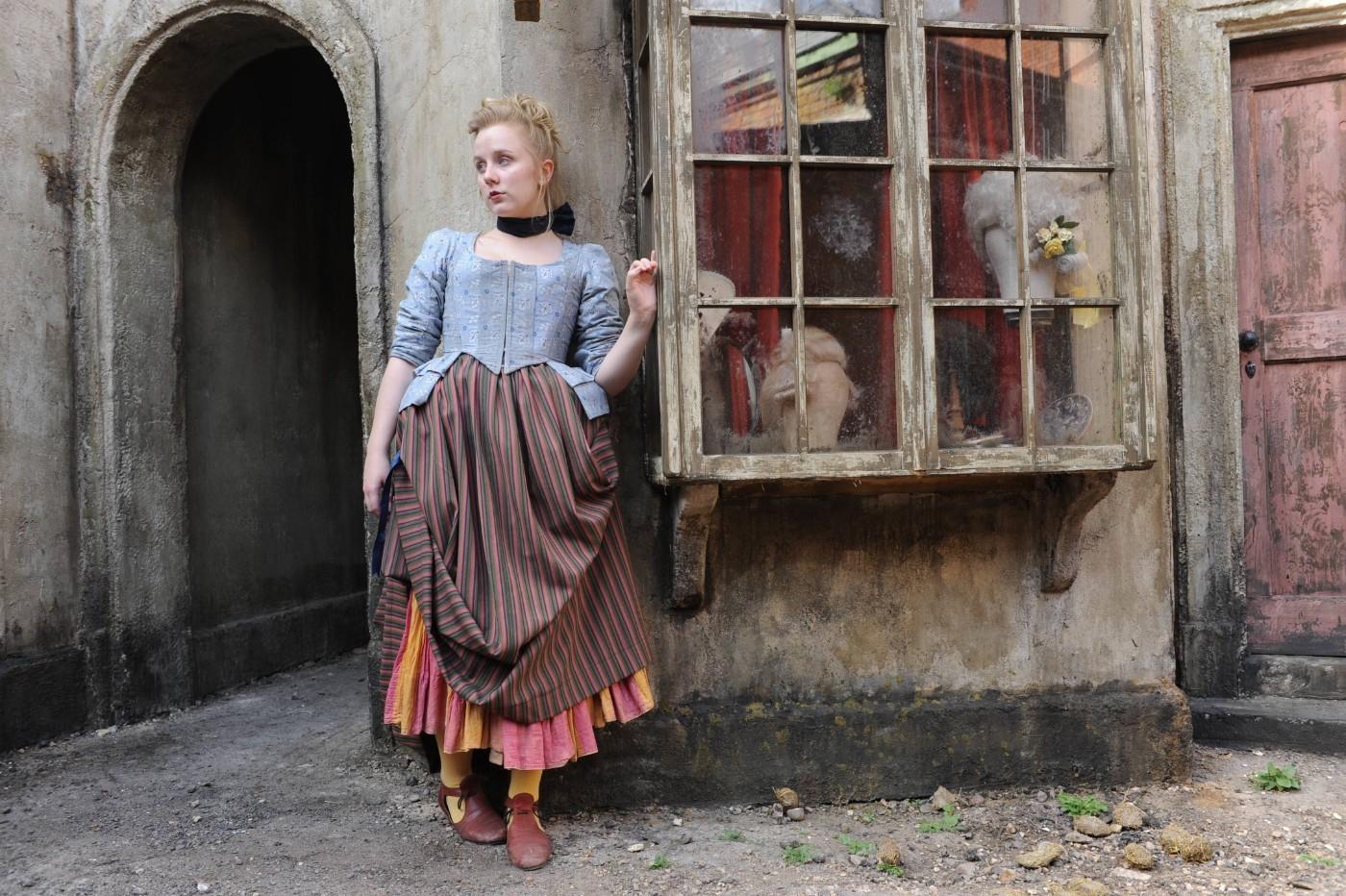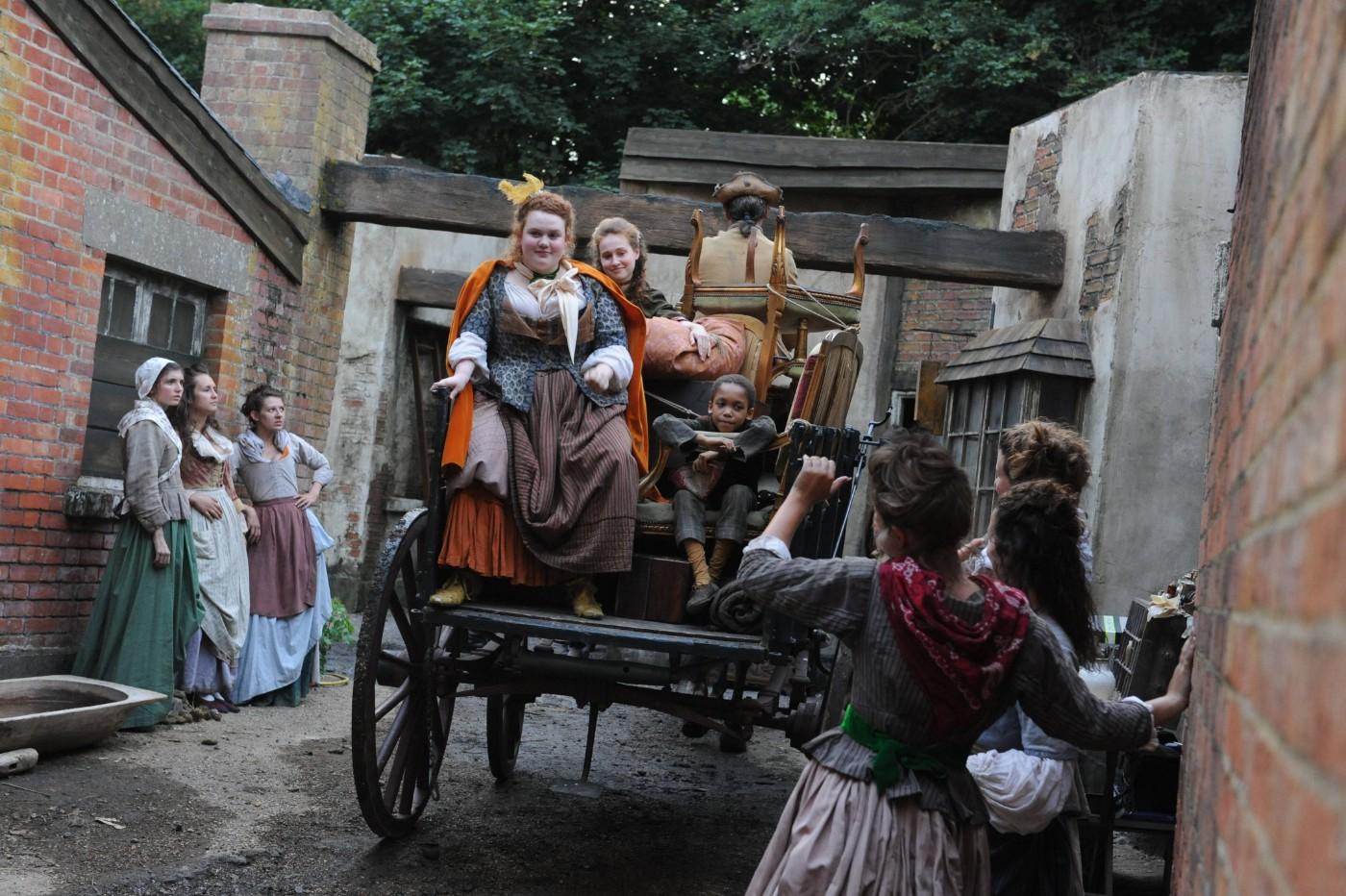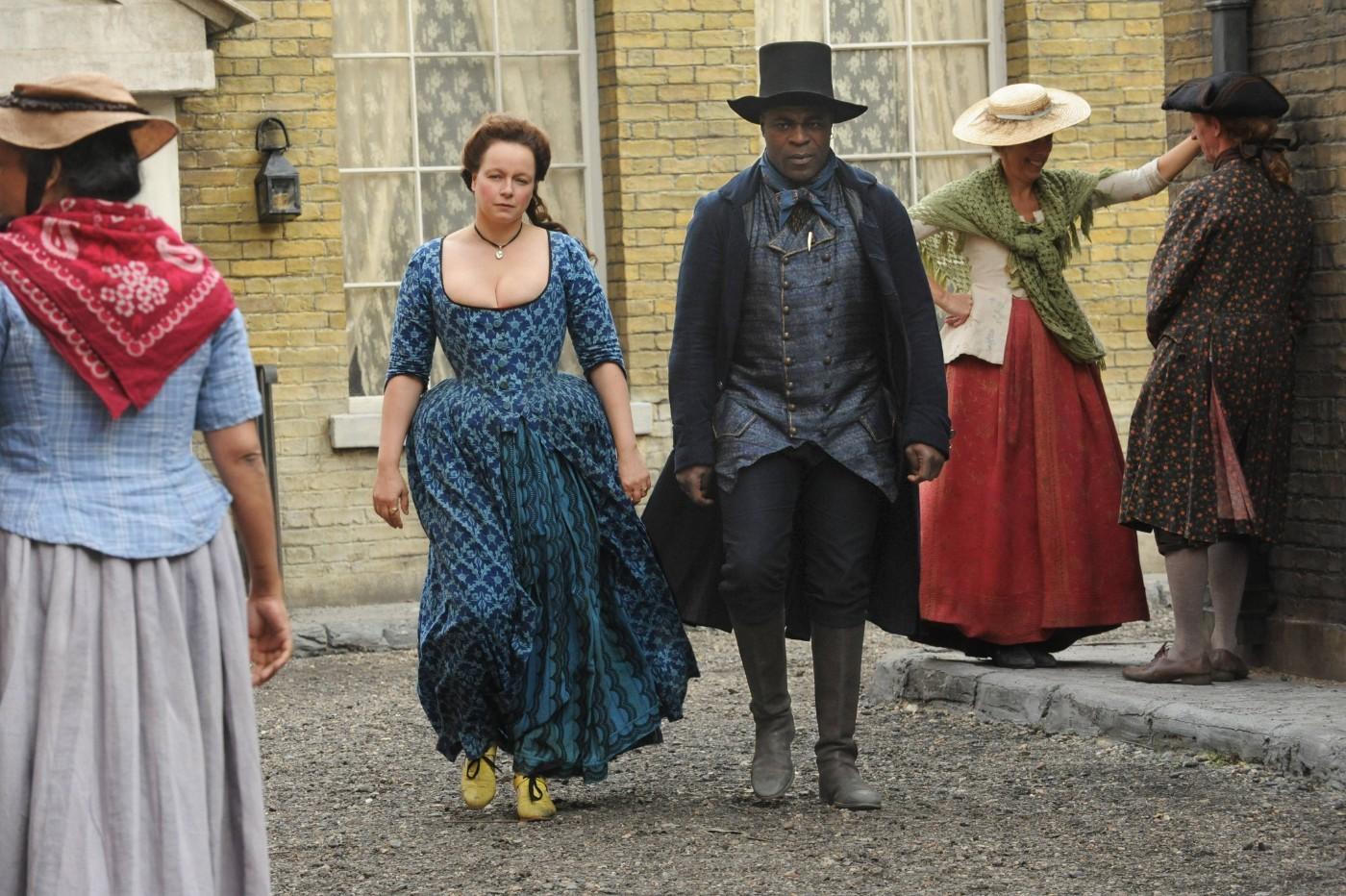Harlots starts out following rival pimps Lydia Quigley and Margaret Wells but quickly expands to feature a whole cast of characters from social groups often misrepresented by history. The task to dress these characters without much reference material should’ve been daunting, but Edward Gibbon pulled it off, setting a tone for fabulous clothes that ring true despite—and sometimes because of—their anachronisms.
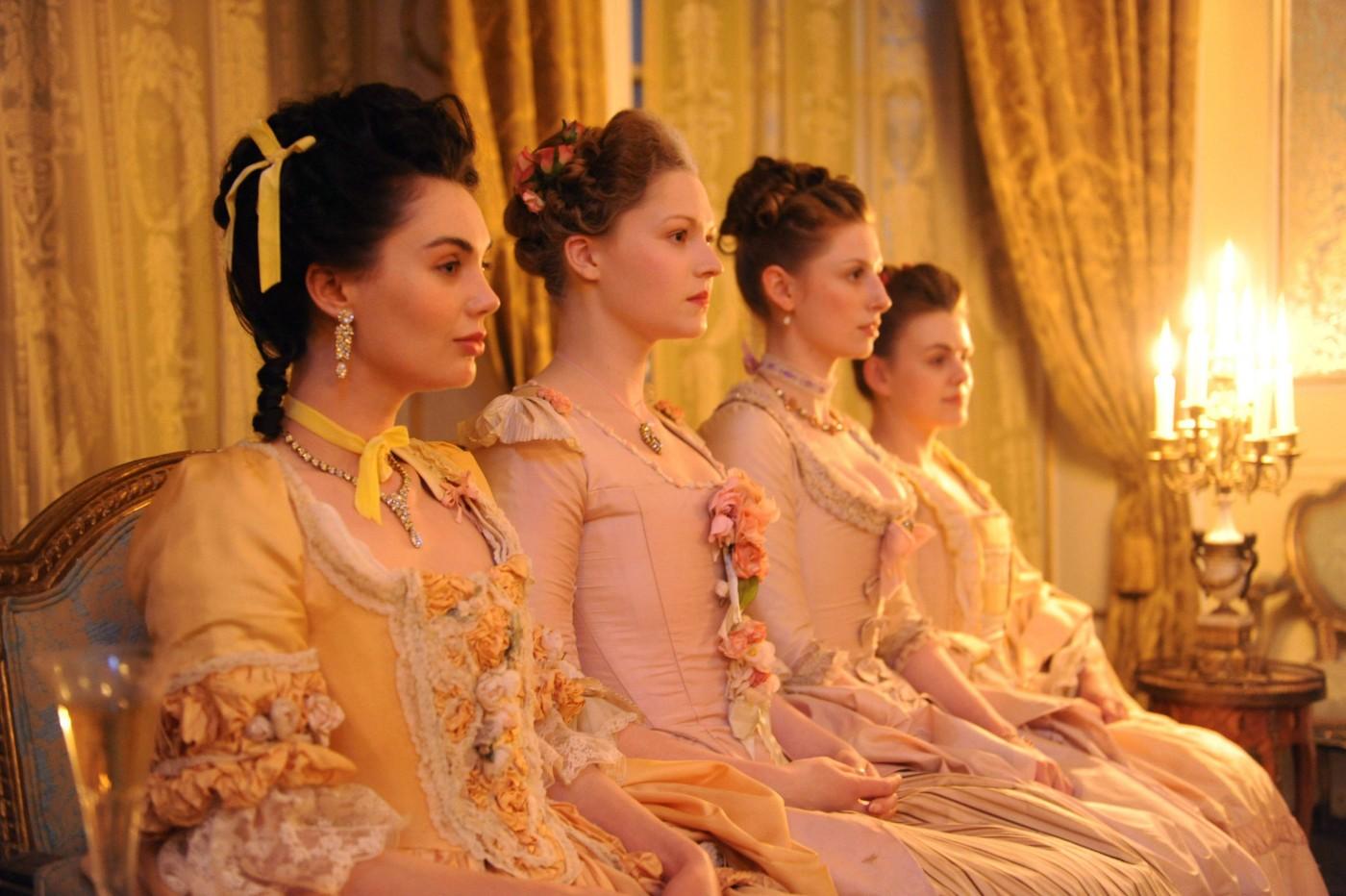
Quigley's Harlots Featuring Marie-Louise D'Aubigne (Poppy Corby-Tech), Harlots Season 101, Costumes by Edward Gibbon
Featuring aspects of 18th-century visual culture in a self-aware and witty way, the Hulu period drama Harlots plays off of modern understandings of this period’s style in an unconventional way. Taking the known facts into account and riffing off of them, this strategy gives the show a punk feel with sharp commentary. Season three premieres July 10, and in celebration, Art & Object sat down with costume designers Edward Gibbon and Richard Cooke to discuss the foundations and future of the show.
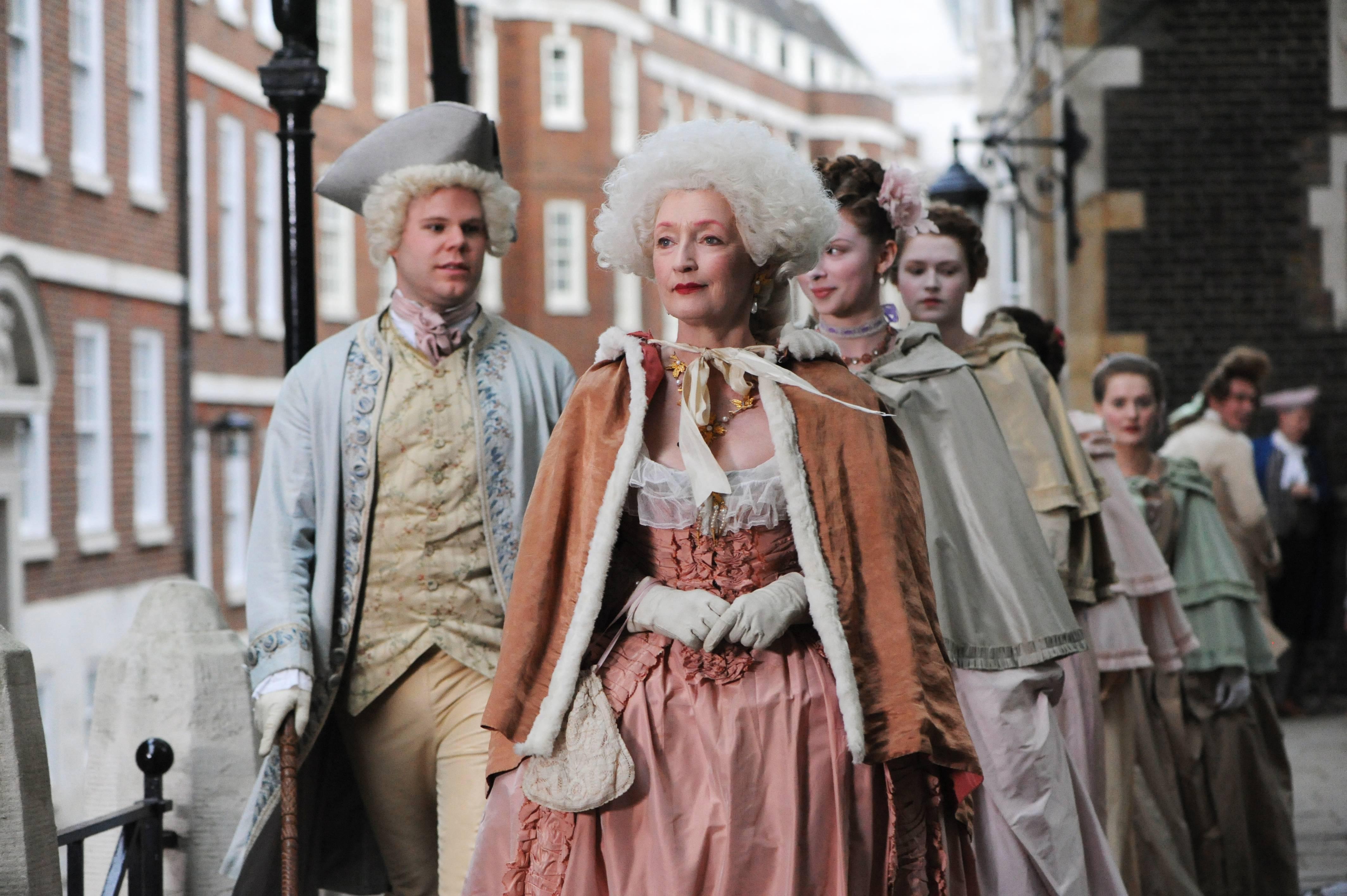
Lydia Quigley (Lesley Manville) with Her Harlots and Son, Charles (Douggie McMeekin), Harlots Episode 101, Costumes by Edward Gibbon
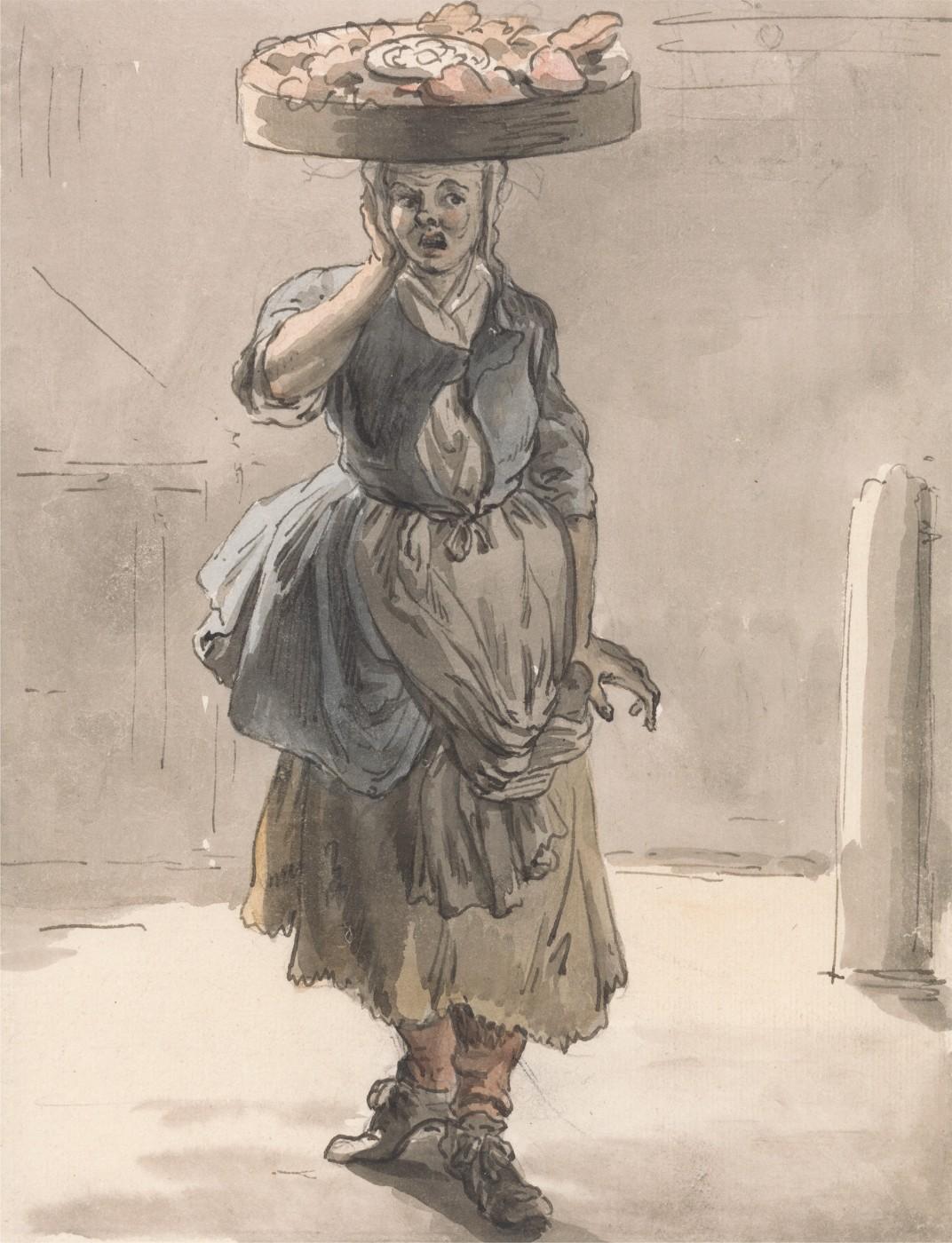
Paul Sandby, Cries of London: Lights for the Cats, Liver for the Dogs, ca. 1759
This sense of authenticity comes from his process. Though Gibbon starts with archival research, he’s always got an eye on fashions from surrounding regions and periods. “It broadens out once I feel I’ve got the general idea of how it looks,” he explains, “or how it's supposed to look.”
“Supposed to look” is key since gallery and grand estate portraits are rarely realistic. “Naturally,” Gibbon reasons, “it's a frozen moment in time. They're all correct and everything's perfect.” While this worked for wealthier characters like Quigley, Gibbon wanted something else for characters “living on the breadline.” He was particularly inspired by The Cries of London, a series of drawings by 18th-century artist, Paul Sandby.
Gibbon calls Sandby “the Sartorialist of his day.” The drawings feature normal people sporting tucked-up skirts, fraying seams, and wonky capes. There’s a spontaneous, photographic quality to the images. The inspiration is clear in the poorer characters’ final costumes. Poverty may limit their choices but, like any real person, these characters still think about how they are perceived and fashion themselves accordingly.
Season three designer Richard Cooke has approached the job with a similar sense of freedom.
Picking up one year after season two’s finale, season three shows Charlotte Wells thriving after having taken over her mother’s brothel. To communicate this, Cooke chose to move Charlotte’s clothes forward in time. “I've made her skirts shorter, I've done away with cages and panniers. I've just given her quilted petticoats with a bit of a bum roll.” Cooke has also given Charlotte a modern “mix and match wardrobe,” which can be spotted in the trailer, to facilitate seamless movement between social settings.
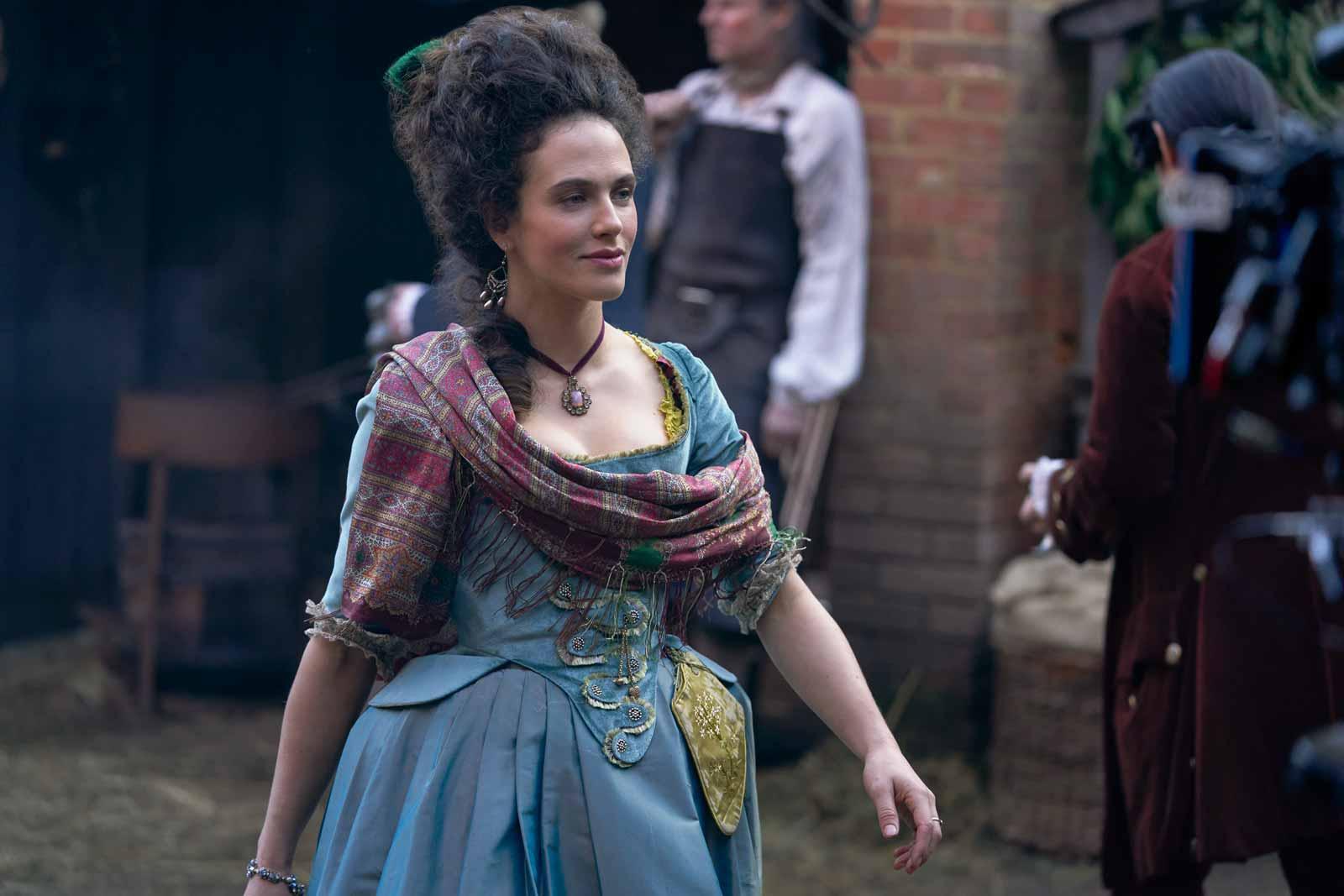
Charlotte Wells (Jessica Brown Findlay) in Mix-and-Match Two Piece with Petticoats and Hip Pads, Harlots Season 3, Costumes by Richard Cooke
“I wanted her to look like she could run around the street,” Cooke explains. The effect is obvious—Charlotte has a new sense of weightlessness. Though heavy and restrictive remained mainstays of women’s fashion through the early 20th-century, Charlotte had money and freedom—things women of the period could only rarely access. Though the choice is anachronistic, it points to a more important truth.
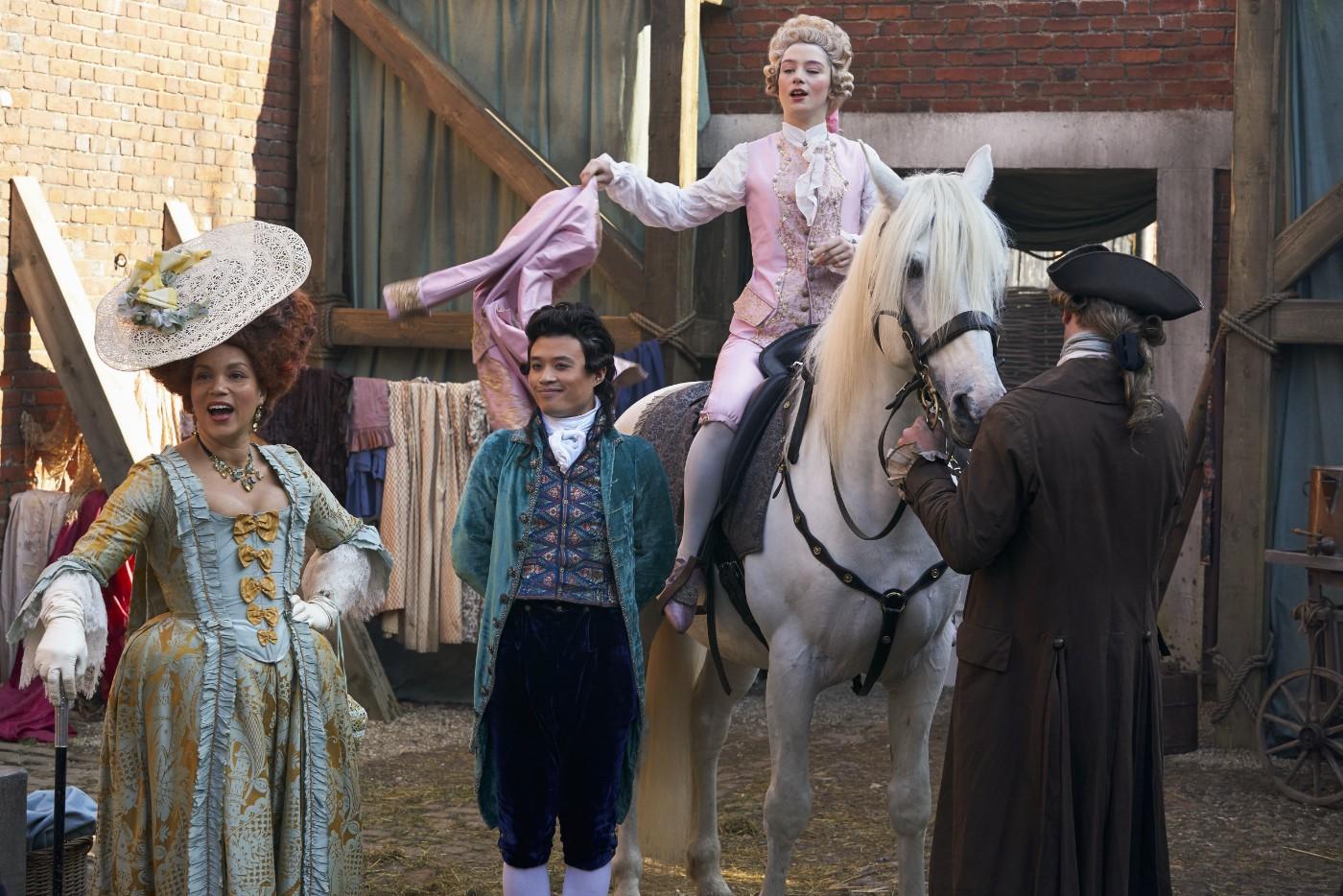
Tailor, Fredo Harvey (Aidan Cheng) and Lucy Wells (Eloise Smyth), Harlots Season 3, Costumes by Richard Cooke
Movement’s intersection with gender will be further explored by Charlotte’s sister, Lucy, starting with a public, cross-dressing stunt orchestrated to promote her friend’s tailoring business. Cooke says this moment inspired a similar, more scandalous instance that will occur later in the season. For Lucy, this will be more about achieving a man’s independence than being a man. The approach highlights women’s limited rights without turning Lucy into a helpless victim.
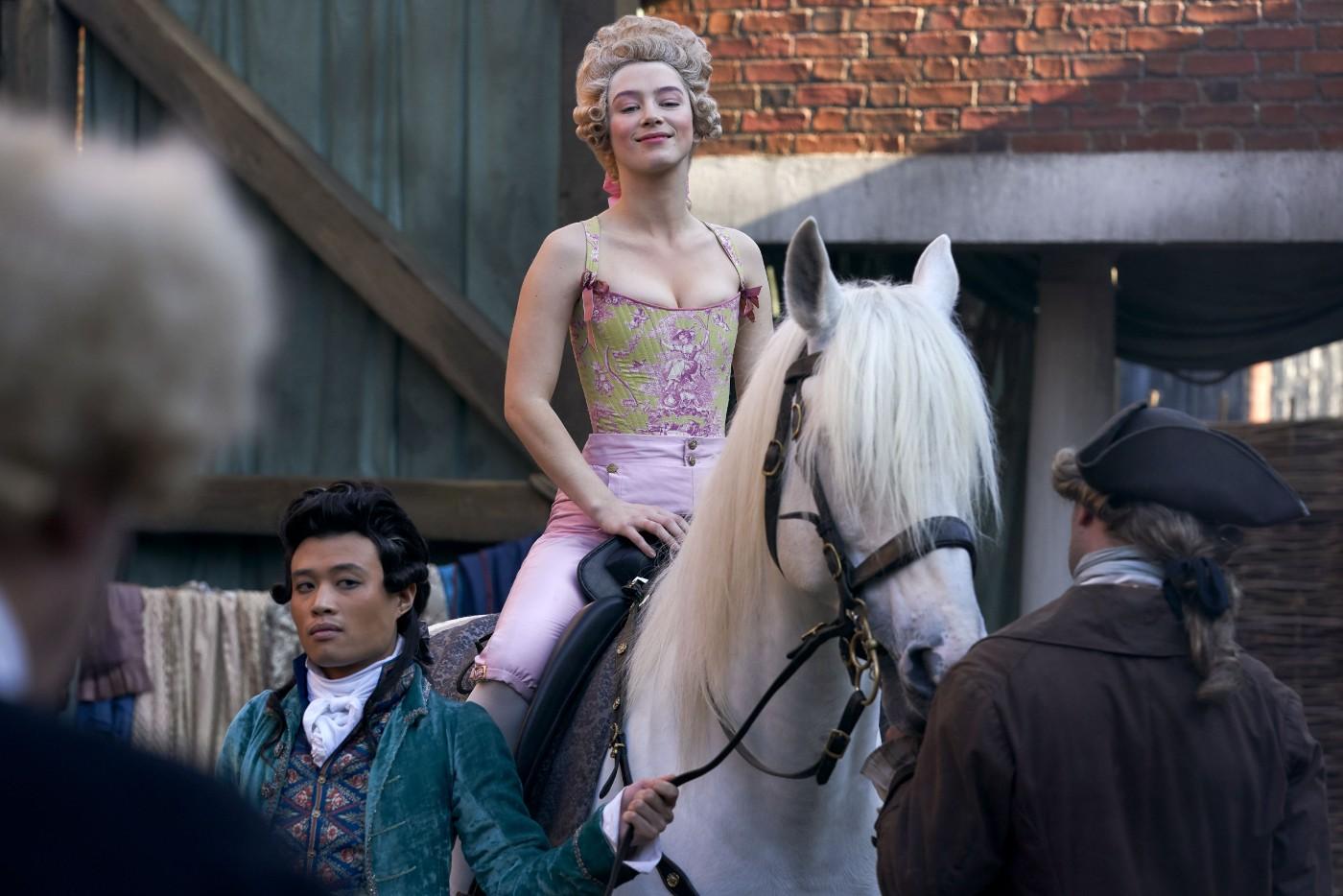
Tailor, Fredo Harvey (Aidan Cheng) and Lucy Wells (Eloise Smyth), Harlots Season 3, Costumes by Richard Cooke
Harlots has featured gender-fluid clothing in the past, as can be seen in Gibbon’s designs for Nancy Birch and Prince Rasselas. With the growing popularity of shows like RuPaul’s Drag Race, it seemed like a good idea to keep up this trajectory, especially because drag has been so successful at encouraging people to question their perception of others. This seems to be the ultimate point for Cooke as a designer and it’s something he’s really good at.
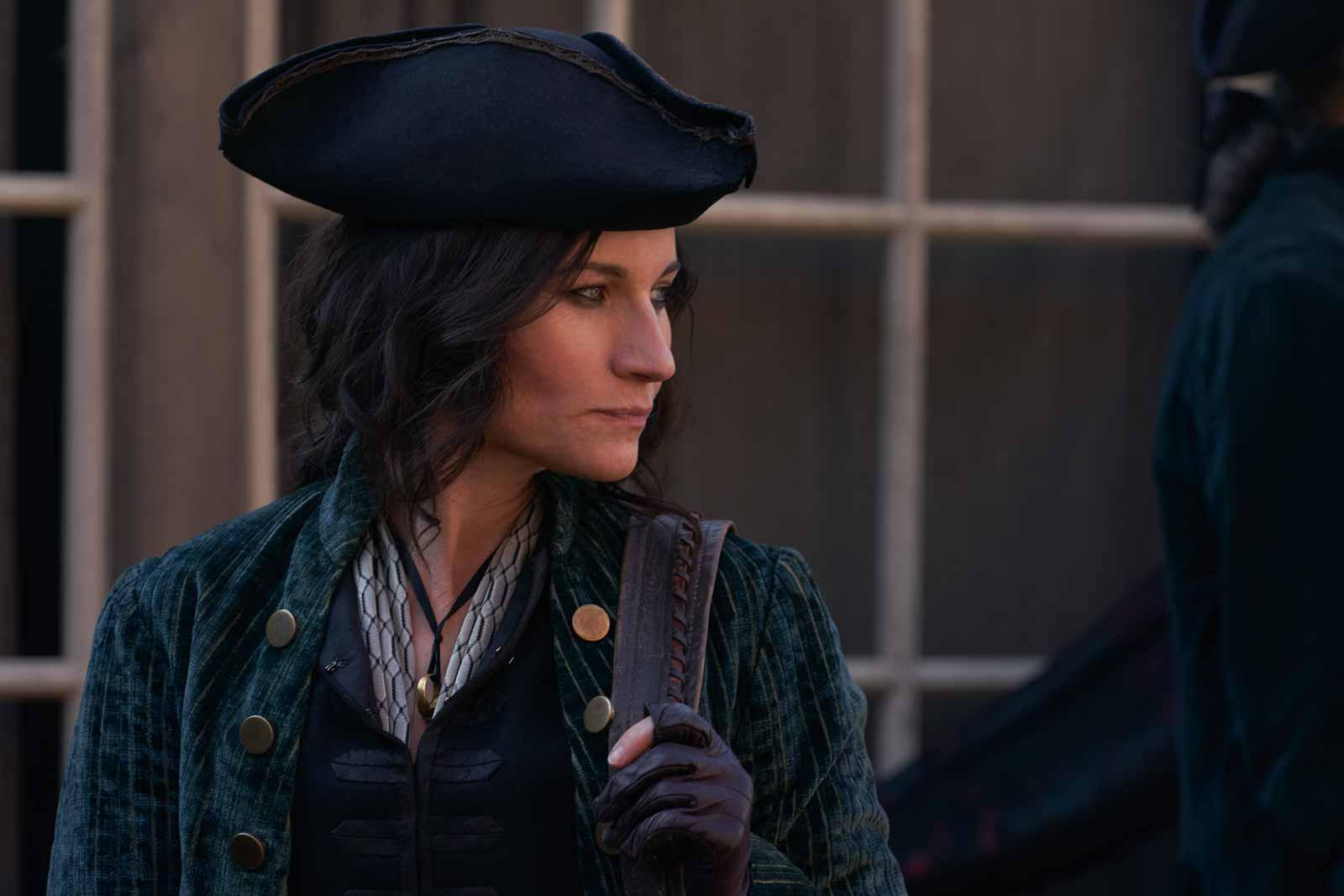
Nancy Birch (Kate Fleetwood) in Mixed Gender Clothing, Harlots Season 3, Costumes by Richard Cooke
The season’s trailer ends with the line, “We are more than what people see.” As Cooke’s designs make clear, “that applies to most of these characters… It's not always about the surface, it's about what's underneath.” The line also applies to him as a designer: “For me it’s about being brave, [and] ...not always doing the obvious.” Cooke’s refusal to take the easy route has resulted in designs that are innovative yet incredibly legible. “Of all the work I’ve done,” he concludes, “I would say this most represents who I am.” That, more than anything, is exciting to hear from an in-demand costume designer.




